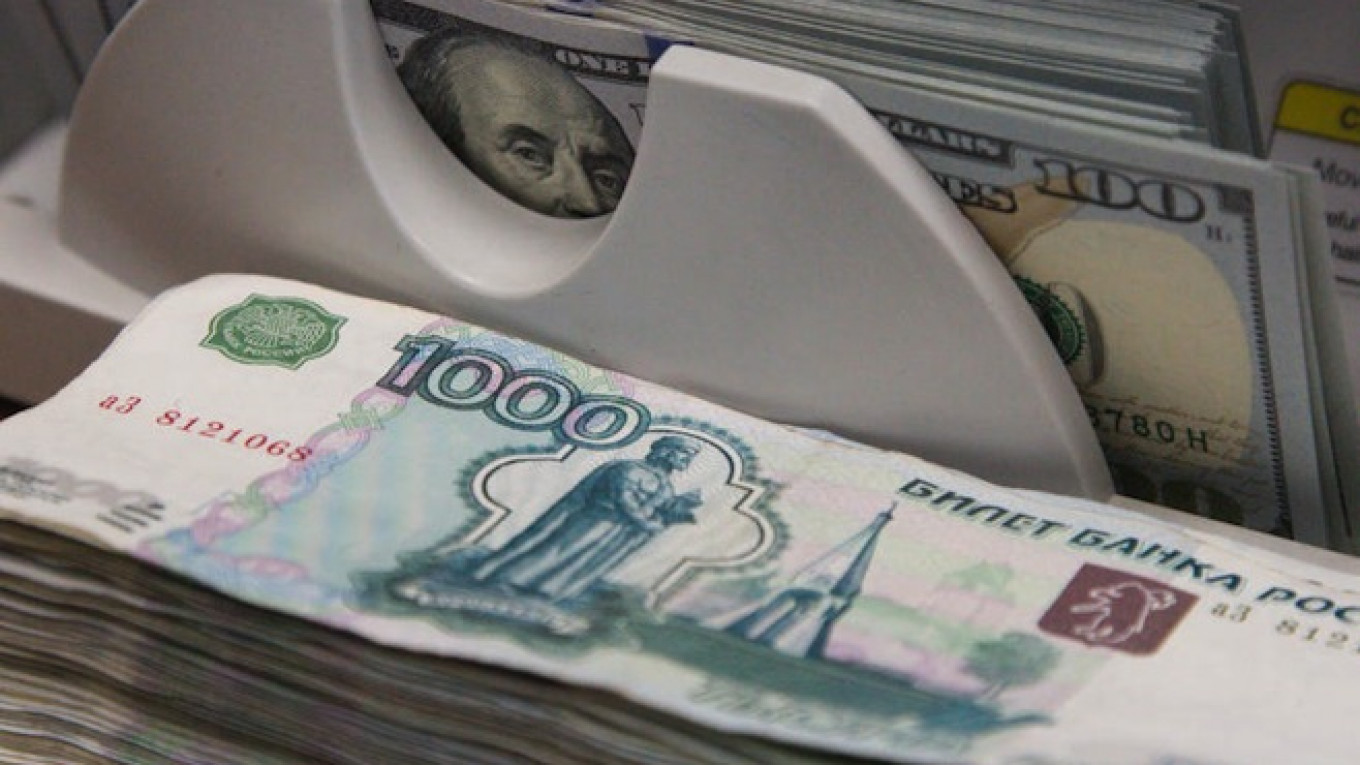The ruble fell sharply Friday afternoon, having surged to fresh 2015 highs in the morning, after the Central Bank said it was increasing the rate at which it lends foreign currency to banks in weekly repo auctions.
By the end of trading Friday the ruble was 3.1 percent down against the dollar at about 53.52.
The ruble had been up as much as 2 percent against the dollar in the morning, continuing a week-long rally and setting a new 2015 high of 50.27 against the dollar.
However, in the afternoon the ruble's gains were first eroded and eventually turned negative, after the Central Bank said that from Monday it was raising the rates at which it lends foreign currency to banks.
Repo rates were raised to LIBOR plus 1.5 percentage points for 7-day repos, to LIBOR plus 1.75 percentage points for 28-day repos and to LIBOR plus 2 percentage points for one-year repos.
Previously the spread over LIBOR was 1 percentage point, having been raised from 0.5 percentage points on March 27.
The Central Bank has been providing foreign currency to banks via repos since October, when it introduced the tool as a new instrument for regulating the currency market, at a time when the plummeting ruble threatened financial stability.
Since then, the cheap repo loans have helped address chronic forex shortages, with the ruble's recent rally signaling reduced need for emergency Central Bank financing.
The ruble is still up around 7 percent against the dollar this week, taking many analysts by surprise as the Russian currency has largely decoupled from the oil price, which is typically its key driver.
On Friday international oil benchmark Brent was up over 1.5 percent to $57.6 per barrel.
BCS analyst Mark Bradford said in a morning note that the ruble was being supported by the calm situation in eastern Ukraine, where February's Minsk peace deal appears to be holding following months of fighting between government forces and separatists.
"All the same one can't exclude a [downward] correction for both the ruble and stock indexes," he wrote, estimating the ruble's fair value at 57-58 per dollar at current oil prices.
Analysts at Rosbank said that the ruble was being buoyed by attractive ruble interest rates on currency forwards and local treasury bonds, as well as technical factors.
"The USD/RUB pair is approaching the level of the 200-day average (49.44 rubles per dollar), which strengthens the strategy of selling foreign currency," they wrote.
Russian stock indexes also turned negative on Friday afternoon, reflecting the reversal in the ruble, after strong gains in the dollar-based RTS index in the morning.
The RTS closed down 0.4 percent at 999 points, after having been 3 percent up on the day earlier in the session, while the ruble-based MICEX index was down 0.6 percent to 1,657.
A Message from The Moscow Times:
Dear readers,
We are facing unprecedented challenges. Russia's Prosecutor General's Office has designated The Moscow Times as an "undesirable" organization, criminalizing our work and putting our staff at risk of prosecution. This follows our earlier unjust labeling as a "foreign agent."
These actions are direct attempts to silence independent journalism in Russia. The authorities claim our work "discredits the decisions of the Russian leadership." We see things differently: we strive to provide accurate, unbiased reporting on Russia.
We, the journalists of The Moscow Times, refuse to be silenced. But to continue our work, we need your help.
Your support, no matter how small, makes a world of difference. If you can, please support us monthly starting from just $2. It's quick to set up, and every contribution makes a significant impact.
By supporting The Moscow Times, you're defending open, independent journalism in the face of repression. Thank you for standing with us.
Remind me later.


